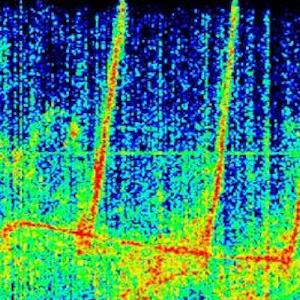Evolution and musicology
Reunion is a small island and it’s cultural history has evolved over time, within an atmosphere of mixed ethnicity and colliding cultures, making it unique, engaging and compelling. Over the last 200 years, migration of people along-with their native idioms (from India, Madagascar, France, east Africa, Pakistan and China) has created an exclusive and rare community in La Reunion. Best defined as Creole, it reflects in the indigenous culture, music, art, crafts and the involved artistic landscape of the island. This very tapestry of Creole casted the foundations of Maloya music and poetry. Though nascent in comparison to east African, Malagasy and Tamil music, Maloya is just about 60 years into a movement, rising post colonization and liberalization in the 1960s. The tradition and roots of Maloya music is embedded deep in migration and conserved nativity of various migrating communities. Two hundred years of influx resulted in the current ethnic pot-pourri of the island. Circa 1970s, Maloya music initially served as the fledgling voice of protest and of dissent for the Creole population against the colonizers. Numerous attempted by the Parisian rulers of the island to curb the rituals and musical leanings of the creole eventually proved unsuccessful. Historic musicology of Maloya is born out of a striking ethnic blend and chorals of militancy. Malagasy ‘Kabar’ beat patterns, east African melodies and chants cross pollinate with north Indian-Bhojpuri inflections, further bolstered by the temple-drummers of Malabari and Tamilian ethnicity. A typical Maloya band would comprise of the leading ‘chanteur’ and the five principle instruments : Rouler (low-tuned skin-drum) / Kayamb ( rattle drum made of sugar-cane tubes and seeds ) / Sati and Piker ( Percussive idiophones with high pitch ) and Bobre ( single string instrument ). All these instruments arrived in Reunion via separate groups of migrating labour and traders from East Africa, Madagscar, Southern Indian and the Indian Ocean region. These musical practices, prejudices and their energies suffused eventually, percolating all-over the island slowly - as a basis of fraternity as well as daily community entertainment : Maloya would be the staple festive music across various creole, white and immigrant communities (Almost comparable to the advancement of Blues and Soul music in North America, post colonization and abolition of slavery). Intricate yet varying techniques, along-with a contrast of subjects and attitudes emerged within the Maloya groups dotted around coast of the island. By the 1980s, fifteen years into the “ Militante Culturel “ movement, Maloya sounds and anthems were spreading out into the Indian Ocean region, South Africa, Madagascar and to mainland France. Pioneers of Maloya : Firmin Viry, Danyél Waro, Ziskakan, Bastér (Thierry Gauliris), Ti Fock and Rwa Kaff have been responsible for transforming Maloya from a creole voice to an international musical message of Réunion Island.Maloya a legitimate and consistent voice for the Creole and French populous of Reunion island. For close to three decades bands and artists such as L’Indigo, Natalie Natiembe, Maya Kamati, Christine Salem, Ti Loune and Rene Lacaille have been at the heart of the Maloya soul and spirit. Their songs speak of the Creole struggle for equality, peace and justice : their poetic stance is enriched and fortified, time and again by the ballads and folklore of the erstwhile (colonial) era. Present day contemporary Maloya music and dance has become intrinsic in all facets of Reunionaise life, at festivals, clubs, radio, media and television. Maloya is the socio-cultural essence and pride of Reunion island. As much the influence of Sega and east african music can be heard in Reunion, roughly 400 albums are released annually set against a small population of approximately 800,000 inhabitants. Sugarcane, Rum and Passion Fruit aside : music and Maloya is the most soulful attraction and the bloodline of the island’s Creole culture and history.
Maloya Musicology - https://www.tde-journal.org/index.php/tde/article/view/1047/990
Maloya and Electronic Music: The Transformation
Heralded by technology and electronic music culture, the world over as many forms of ethnic,
indigenous and tribal music transcended borders and colors - so did Maloya and its sound. Revitalized
and remodeled with electronic sounds at the hands and ears of the younger generation of Reunion,
resulted in a chance mutation inside tradition. Since the 1990s as influences of Dub, Reggae, Punk,
Funk, Afrobeat, Hip Hop, Zouk and Techno seeped into youth sensibility, the presence of Maloya (as
roots) remained strong. Inside the small island, this bonhomie of ‘heritage’ and ‘new-age’ , a hybrid
identity was born : Initially as a blueprint of a genre, yet to appear in its complete form, a new version of
Maloya was in the making. Rising from a technological standpoint, the traditional rudiments of Maloya
beats and melodies merged with the dynamics of synthesizers, drum machines and the compelling
effect of electronic sounds. Maloya is re-mapped on the electro-acoustic canvas. The merging of these
contrasting synergies, of technology and tradition creates a compelling and future driven outflow of new
music, serving as the voice of a ‘generative culture’.
Agents of change :
Three of the earliest propagators of electronic music in Reunion were Jako Maron, Dominique Iva
and Jeremy Labelle.
Photo: Dominique aka Psychorigid.
https://twitter.com/psykobaba
Their extensive re-exploration of Maloya roots combined with an acute need to re-define the sound and aesthetics of electronic music, has been meaningful and encouraging to the islands emerging music scenario. Comparable to the ideologies of Theirry Gauliris in the 1980s, these three musicians invoked a rebellious attitude and desire to reinterpret their narrative of Maloya as well as electronic music. Drawing inference from a contrasting backdrop of popular forms such as rock, punk, reggae and dub music, separately Jako, Dominique and Jeremy applied their musical vision upon the crucial rudiments of Maloya. Almost like `future revisionists` of Maloya and it’s dynamics, these three versatile and independent musicians spawned the seeds of a future sound. Reconfiguring the soul and earthy nature of Maloya within the electronic arena using drum machines, samplers, and synthesizers was initially bizarre and rather edgy. The rebellious ideas and modernist attitudes of these three artists, emerging from different locales of Reunion island, was key to the breakthrough and new interpretations of Maloya. The use of electronic instruments was crucial to the process of re-inventing Maloya. Distinct and compelling electronic music forms playing out within the conscience of Maloya, eventually tipped over into a new phenomenon. Electro Maloya as many Renionaise refer to the genre. The old form had reappeared, rejuvenated via technique and technology. As the productions of Jako, Dominique and Jeremy gradually found kinship with the audience of the island, further celebration and recall was triggered by the use of voices ( from old recordings & samples) of classic Maloya tunes and creole folklore.
photo: Jako Maron / http://www.sebtheplayer.com/jako-maron/
The challenge of diversity : Maloya avec Electronica ?
Popular music (traditional and or technological), is a compulsive language which is prone to revision,
reinterpretation and even reincarnation in terms of identity. Just as Creole is is a definition of a new and
hybrid language, created between generations and two foreign languages, so is the governing force of
electronic music technology : Given the constant possibility and proof of mutation stemming from the
machines at the hands of the manipulators, a synergy of Maloya and electronic music has transformed the old idyllic romantic nature of Maloya. Into What? We don't know yet ... Just as traditional forms of Brazilian, Argentine, Jamaican and Afro-Cuban and even endemic european folk music merged with electronic dance music to invoke greater cultural diversity, the eventual and persistent
merger of Maloya and electronic music could define the music culture of this tiny island.
Duality as well as diversity is felt in the merging of Maloya and Electronic music. Best explained as a continuos combination of roots with routes. The ‘roots’ of creole culture, mutating and remodeling itself on a ‘route’ defined by technology. A philosophy that is propagated by youth ideology. Instead of searching for chaste conclusions (world music category) or sampling the native sound as a source for easy remixing. A most recent example of the island's Maloya fusion and inflection of Favela Funk (Brazilian Portuguese lyric & meter)
Document Available in French/English - http://docdro.id/I3IUcUK





























0 -